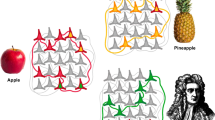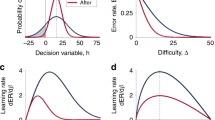Abstract
AFTER MORE THAN TWO DECADES OF NEGLECT, artificial neural networks (ANNs) are emerging as a strong contender in artificial intelligence. However, researchers whose leanings are more toward expert systems or other types of symbolic formalisms for knowledge representations warn against overly enthusiastic claims depicting ANNs as replicating the process of human thinking. While some of these objections are justified, the technology warrants a closer look by designers of educational software.
Though neural networks are usually considered as a part of artificial intelligence, they are very different from the AI formalisms to which we’re accustomed. Expert systems use if-then rules to arrive at an answer. These rules are formulated by a knowledge engineer who works closely with a content expert to derive a model of the problem space. Neural networks, however, are fed sample cases (called “training sets≓), learn how to recognize patterns in the sample data, and then use this experience in handling new cases. Because neural nets are trained rather than programmed, the only overhead — other than the initial design — is in collecting and formatting the data sets (Carlson, 1990b, p. 50).
This paper first describes the essentials of how an ANN learns, using a classic application in pattern recognition to demonstrate an operating ANN. Of the several “cognitive≓ roles ANNs are suitable for, two seem especially appropriate for computer-mediated education: (1) intelligent filters and (2) spreading, associative memories. To illustrate each, I describe prototypes I’m working on at the Air Force Armstrong Laboratory.
Similar content being viewed by others
References
Becker, A.L. (1966, May). Symposium on the paragraph.College Composition and Communication, 67–72.
Carlson, P.A. (1990a). Artificial neural networks as cognitive tools for professional writing.SIGDOC Asterisk, 14(4), 95–110.
Carlson, P.A. (1990b, October). Cognitive tools and computer-aided writing.AI Expert, 48–55.
Carlson, P.A. (1990c, April). Square books and round books: Cognitive implications of hypertext.Academic Computing, 16–19; 26–31.
Carlson, P.A., & The, A. (in press). A cognitively-based neural network for determining paragraph coherence.Proceedings of ANNIE ’91. St. Louis, MO. November 10–12.
Carlson, P.A., & Slaven, M. (in press). Hypertext and the age of virtual information.Journal of Information Systems Management.
Chafe, W.L. (1976). Givenness, contrastiveness, definitiveness, subjects, topics, and point of view. In C.N. Li (Ed.),Subject and topic. New York: Academic Press.
Christensen, F. (1978). A generative rhetoric of the paragraph,Notes toward a new rhetoric: Nine essays for teachers. New York: Harper and Rowe, pp. 74–103.
Caudill, M., & Butler, C. (1990).Naturally Intelligent Systems. MIT Press.
Gibson, W. (1966).Tough, sweet, and stuffy: An essay on modern American prose styles. Bloomington: Indiana University Press.
Halliday, M.A.K., & Hasan, R. (1976).Cohesion in English. London: Longman.
Kintsch, W., & van Dijk, T.A. (1978). Toward a model of text comprehension and production.Psychological Review, 85, 363–394.
Meyer, B.J.F. (1982). Signaling the structure of text. In D. H. Jonassen (Ed.),The technology of text: Principles/or structuring, designing, and displaying text, (pp. 64–89). Englewood Cliffs, NJ: Educational Technology Publications
Minsky, M.L., & Papert, S.A. (1969).Perceptrons. Cambridge, MA: MIT Press.
Winer, B.J. (1971).Statistical principles in experimental design (2nd Ed.). New York: McGraw-Hill.
Author information
Authors and Affiliations
Rights and permissions
About this article
Cite this article
Carlson, P.A. Artificial neural networks and instructional technology. J. Comput. High. Educ. 3, 3–22 (1991). https://doi.org/10.1007/BF02942595
Issue Date:
DOI: https://doi.org/10.1007/BF02942595




